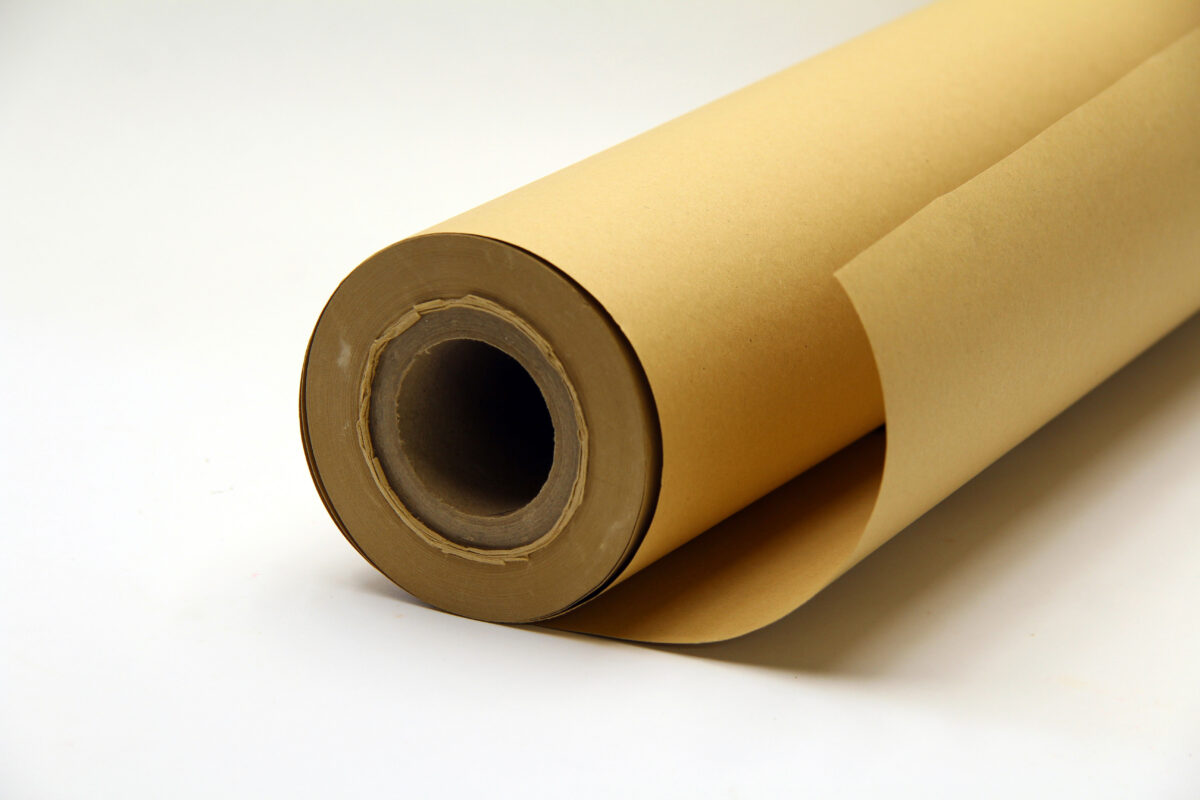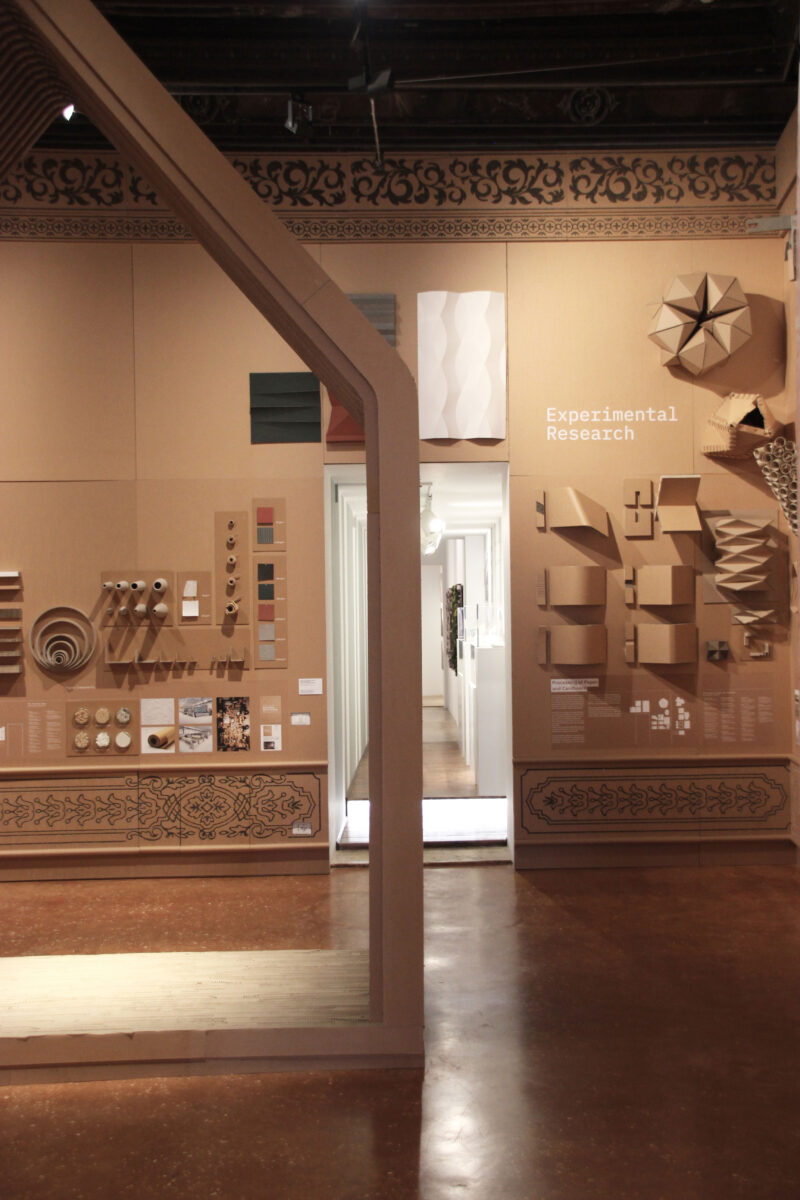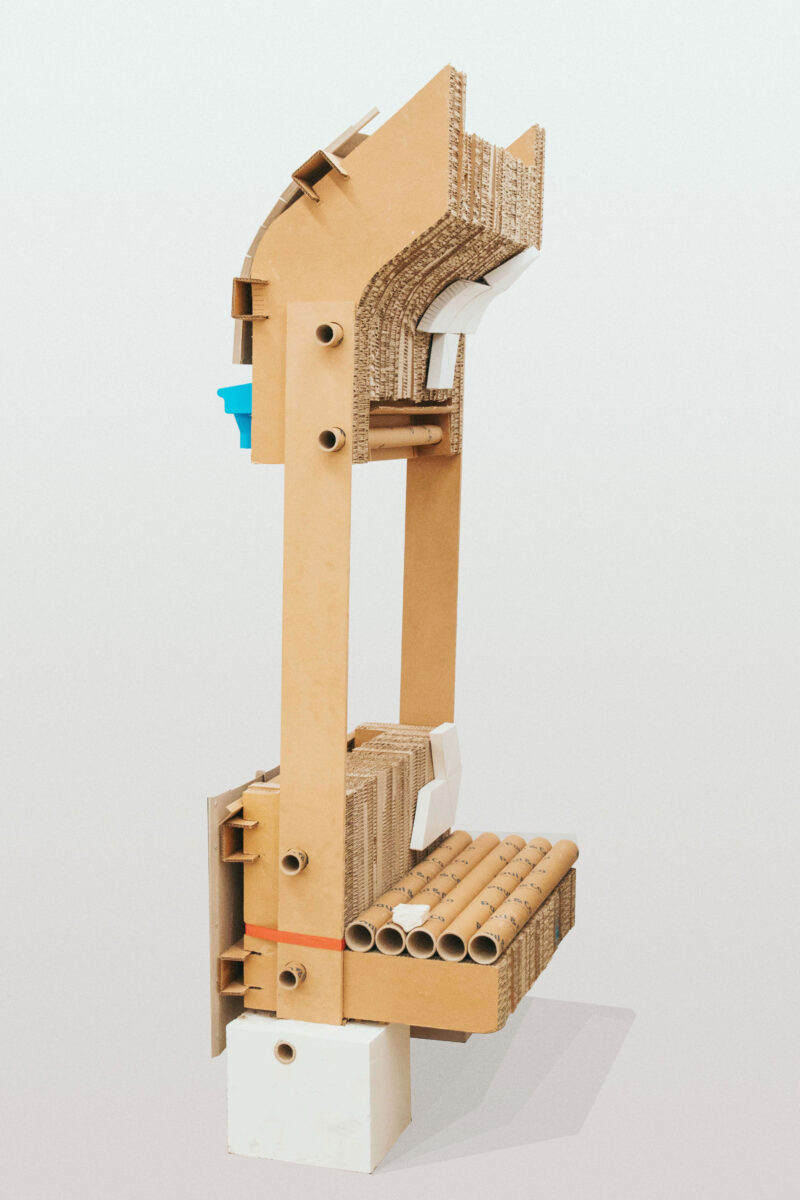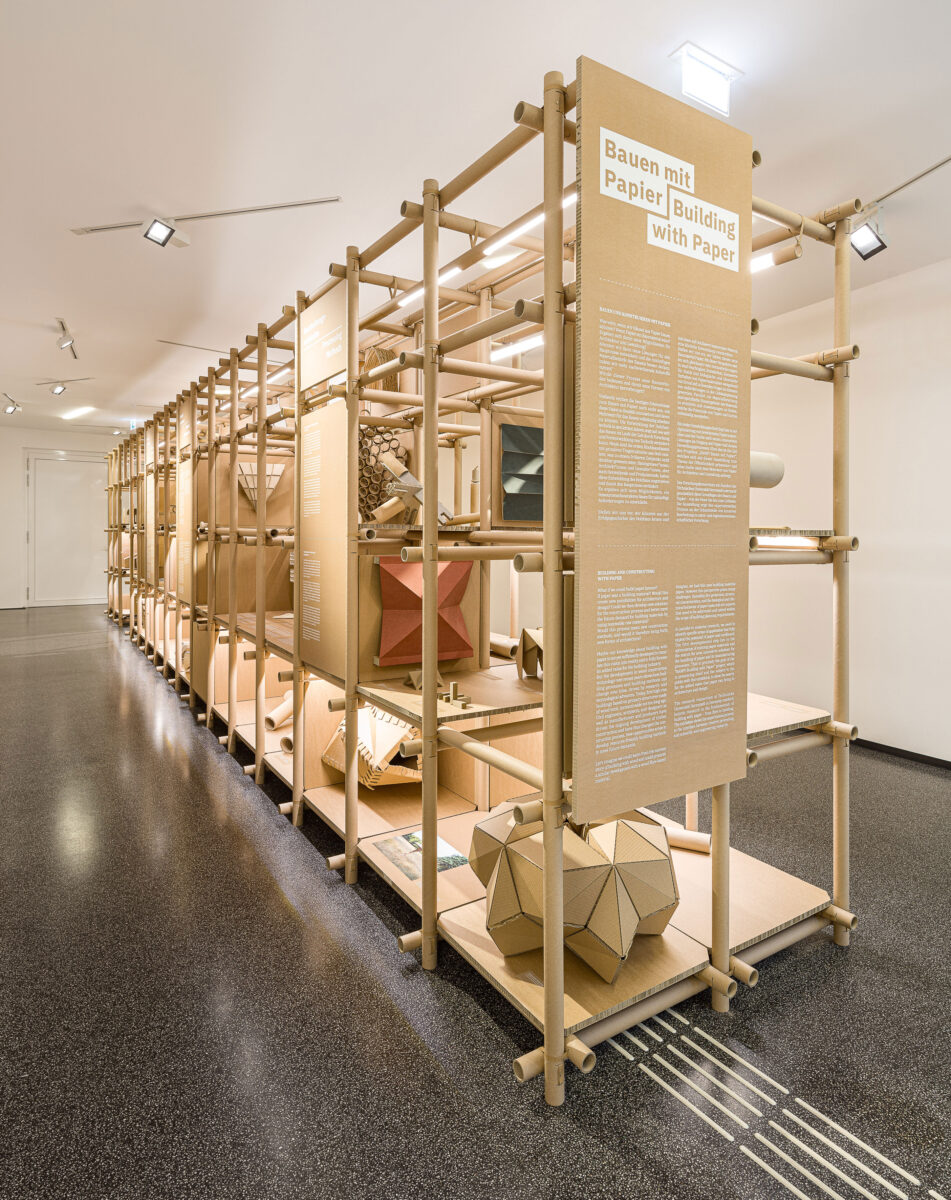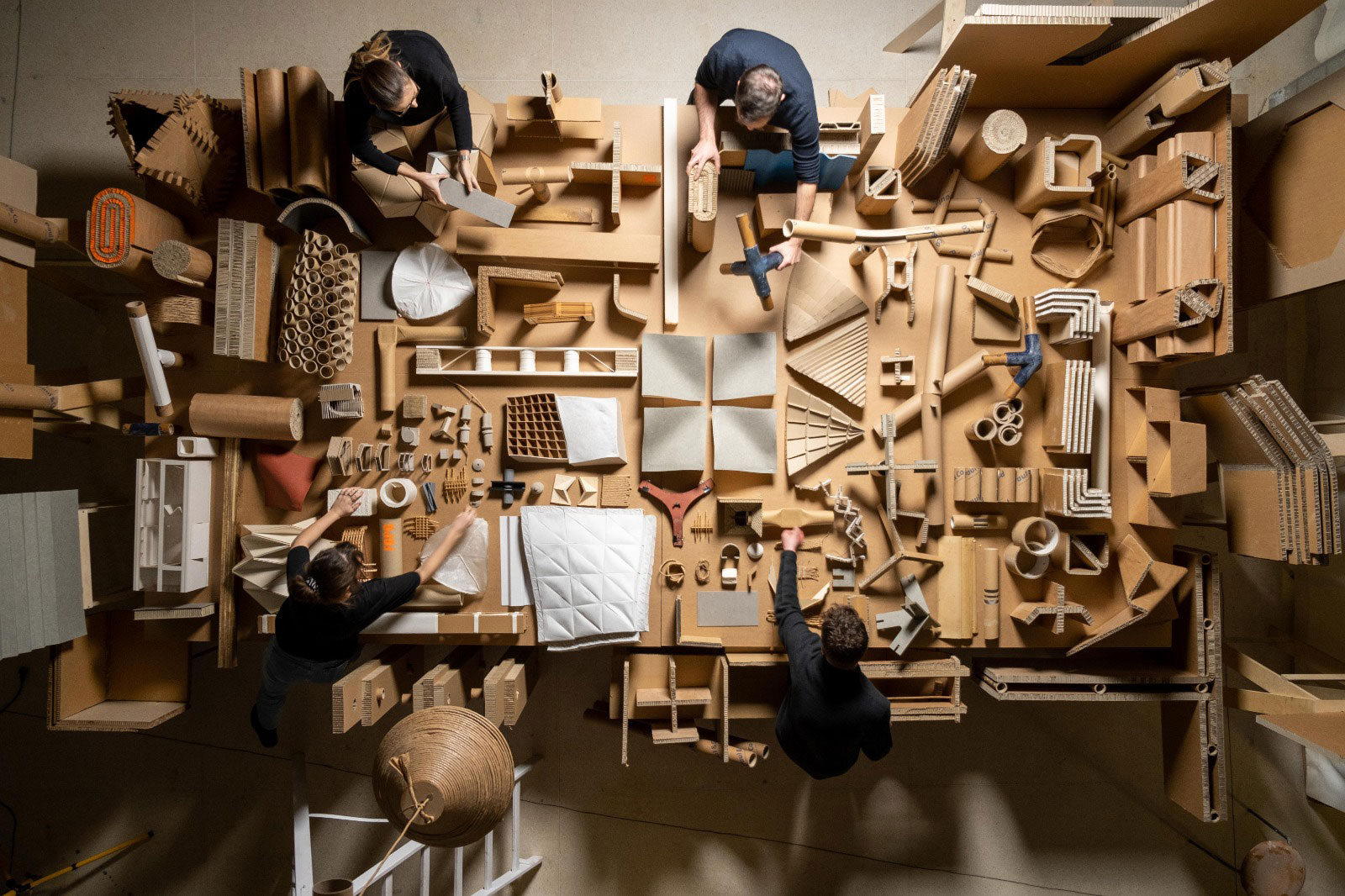
»FUNDAMENTAL EXPERIMENTAL RESEARCH FROM FIBER TO BUILDING«
Building with Paper
Future generations will have to meet their needs predominantly from renewable raw materials, so it is essential to develop a more resource-efficient building method to meet future requirements. As a recyclable material obtained from renewable raw materials, paper offers outstanding potential for more environmentally friendly and thus more sustainable construction. The production of paper is already highly efficient and optimized today, but the products have so far only been used in simple applications in the construction sector. The potential of paper as a building material, which goes far beyond its current use as gypsum fiberboard or insulating material, needs to be systematically explored. It is a lightweight construction material in which the fibers – in contrast to wood – can be arranged and functionalized in a customized manner. This perspective poses many challenges, as it were. For example, moisture, fire protection, characteristic values for statics and biological and chemical behavior of paper materials are largely issues to be solved in the context of building design requirements. In parallel with materials research, specific areas of use for the material must be identified and applications found that fully exploit the potential of paper and board. A first development step here is the optimization of existing paper materials and the search for new, innovative solutions in dealing with paper and its manufacturing processes.
- Image Film of the BAMP! – Building with Paper Project by Oskar Gerspach-Wolf
Architecture
Architectural expression plays a decisive role in research into a new building material. The architectural form of a building made of a specific material reflects the construction methods inherent in the material and provides information about the requirements and characteristics of the material. Moreover, each construction method has, as it were, an impact on the user of buildings, in addition to technical-functional aspects. The possibility of manufacturing components from paper building materials and establishing them on the market is a conceivable scenario in the coming years.
In addition to the requirements for the new material paper and its construction methods, the BWP consortium is also addressing the requirements for the use of buildings and their environment. The aim is to develop completely deconstructable, CO2-neutral buildings with a high level of user comfort and a maximum service life appropriate to the material. All this could be summarized in a new term of „paper construction“.
Design
The design is based in particular on the roots of the BWP consortium in the field of architecture and design in particular also the plastic sculptural approach at the Department of Sculptural Design at the faculty of architecture in Darmstadt. The artistic-craft approach is based on years of experience in the sculptural-design process with other materials such as clay, plaster, concrete, bronze, glass.
The BWP consortium works in an application-oriented manner, developing and researching new building products made of paper and cardboard using experimental approaches and looking for optimizations for industrial products and their transformation to specific applications in the building industry.
The consideration goes beyond the field of construction and architecture and ranges from furniture and industrial design, to design with analog and digital media, to space-creating art and sculpture.
Elements
The focus in the examination and research of the new materials paper and cardboard is on the design and handling of the material according to the form and function of a fiber-based material and its manufacturing process. The engagement takes place with the help of analog and digital design processes in a scientific context. These creative processes lead in steps of „try and error“ as abstraction aids to direct containment in the context of finding solutions. The resulting variants are „case studies“ and form the basis for the comparison and analysis of the models in terms of their geometric and design relationships at the appropriate model scale.
Exhibition
With active research into the fundamentals of paper as a material and its use in the construction industry is inevitably necessary to rethink and change the image of the public perception of the material.
The presentation of the research results not only in professional circles but also to the general public plays a decisive role. With the aim to make visitors aware of the possibilities offered by paper as a special and sustainable building material for architecture and to eliminate the previous image of a makeshift material .
In the context of the 17th international Architecture Biennale in Venice, Italy, 2021, the research results were presented to the public for the first time. The exhibition contribution „Building with Paper“ as part of the international architecture exhibition „Time Space Existence“ at the European Cultural Center was also part of the goal to promote new thinking around the topic of building with paper and to give the material a new image. The exhibition is made almost entirely of paper and cardboard and thus in itself shows a solution for building with paper in the current context.
The exhibition in Venice was followed by an exhibition at the Paper museum Düren, Germany in 2022 within the framework of the temporary exhibition.
- „Building with Paper“ Exhibition at the Biennale, from 22nd May – 21st November 2021, research exhibition of the TU Darmstadt, project BAMP! for the Architecture Biennale in Venice, Italy. Exhibiting research with the use of paper and cardboard as exhibition design.
- „Building with Paper“ Exhibition in Düren, 6th March – 9th October 2022, research exhibition of TU Darmstadt, FGPG, as a contribution to the temporary exhibition at the Paper Museum Düren. Exhibiting research with the use of paper and cardboard as exhibition design and furniture.
